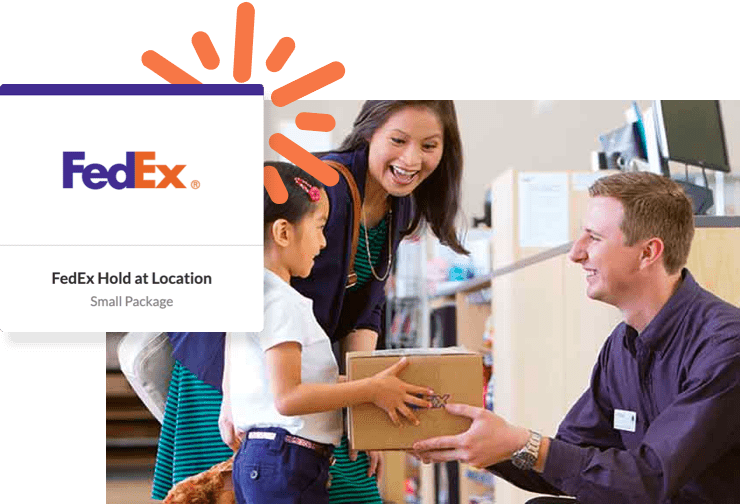Tired of barely breaking even on your shipping spend? See how an improved shipping strategy can transform shipping from an expensive obstacle to a lucrative revenue stream that benefits your customers and your business.
Earlier this month, we sat down with our partners at Skubana to discuss the importance of a shipping strategy. In the presentation, we discussed how to turn shipping into a revenue stream, and the steps merchants should take to get there. Keep reading for a recap of our discussion.
For virtually any ecommerce merchant, the topic of shipping is a loaded one. For many, it’s a groan-inducing task that’s rife with expensive challenges, delays and trouble.
Other merchants, however, have mastered their shipping strategy and turned shipping into a competitive advantage. With intelligent rating technology built into checkout, these merchants are in full control. They’re able to determine how much of a margin they’ll see from each shipment, no matter the origin and destination.
Sound too good to be true? Start here:
Establishing a Shipping Strategy
Some merchants balk at the notion of a shipping strategy, thinking of it as a complication to a straightforward process. Looking to major eCommerce players like Amazon, however, underscores the importance of establishing a shipping strategy that meshes with your brand, products and customers.
Getting started, most merchants have the same questions:
- What number of shipping options is the right amount?
- What carriers should I be showing?
- Should I be offering free shipping at all?
The answer, it turns out, is: to look toward your customers and what they want. If your customers are satisfied with your shipping options, they’re more likely to buy your products. There’s no silver bullet when it comes to eCommerce shipping, but giving your customers what they want could pretty safely be described as a bronze one.
So, what DO customers want?
In short, they want accurate rates, clarity on delivery timelines, and free shipping. Of course, the products and processes of each merchant varies widely, so not every option works as a blanket solution. The numbers back this up too.
- 45% of consumers abandon carts because of unsatisfactory delivery choices
- 60% want to see a delivery date before making a purchase
- 44% abdondon carts because of high shipping costs
- 61% have abandoned carts because no free shipping option was offered
- 35% prefer alternate delivery locations at checkout
Delivering on Customer Expectations
When customers are surprised by or unsatisfied with their shipping costs or options, the appeal of the purchase plummets. To help fight abandonment, carefully examine the experience your customers have during checkout.
Start by asking yourself these questions:
How do my customers want to receive their packages?
Flexibility is the single most appealing way to help customers feel empowered during checkout. At the very least, offering an expedited and standard option can help customers feel like they have the ability to decide when they want to receive their package.
Long gone are the days, that we could expect our customers to be pleased with just a “regular” and speedy option. Customers are more interested than ever in alternative methods, like ship-to-store, local delivery, or even pickup at a grocery store or pharmacy.
Begin by offering however many options are viable for your business, and build from there. As your customers begin to leverage those options, pay attention to what works and what doesn’t. Then, you can hone in on the most popular methods and continue to improve upon them.
Do my customers see accurate shipping rates?
Too often, merchants overlook the accuracy of their shipping spend and don’t notice the gap until it’s too late, costing them dearly. For customers, shipping is a charge tied to a specific purchase, but for a merchant, it’s an integral part of each and every order.
Ensuring your customers see accurate rates is beneficial both for them, to set expectations, and for you, to ensure you’re charging the right amount. Beyond that, savvy merchants are looking at their shipping more than ever to create a lasting revenue stream.
There are several steps to take to ensure you’re displaying accurate rates, and ShipperHQ has tools to enable you to do just that. From live, direct carrier rates, to dimensional packing rate automation and address validation, ShipperHQ has it all and more.
Providing Accurate, Customer-centric Shipping Options
To give your customers the shipping experience they expect, start by mastering a few of the basics:
Calculated Delivery Dates
Five years ago, it may have sufficed to offer a two- to four-day window for delivery, but that simply won’t cut it today. Customers want to know exactly when their package will arrive, how it’s getting there, and what carrier to expect. Incorporating shipping logic that accounts for specifics like weekend deliveries, production timelines, blackout dates and cut-off times can really drive home the tailored and customer-centric experience.
Store Pickup
For brick and mortar stores, diving head-first into ecommerce can feel overwhelming. However, by leveraging those very stores, retailers can get a leg up on shipping by offering store pickup. Customers who want your products without the wait will be eager to use this option, but it also has benefits for you. Pure ecommerce stores don’t have the option to leverage physical pickup locations the same way you do. This gives you a competitive advantage, as well as an opportunity for even more sales, thanks to the foot traffic of online customers.
Expedited and Same-Day Shipping
Consumer expectations have gone from 7-10 business day shipping to overnight shipping in what feels like an instant. If you aren’t providing an option that can meet those expectations, you’re losing out. Not every business needs to provide super-expedited services like 2-day shipping, but for merchants with direct-to-consumer business models, it’s critical to offer a speedy option. Giving customers an option for expedited shipping is appealing, even if there’s an extra cost associated with it.
Alternate Pickup
If you’re not leveraging alternate pickup options to your customers, you’re missing out on a key facet of the parcel delivery landscape in 2020. FedEx and UPS each launched alternate pickup location options in recent years, allowing customers to pick up orders at places like CVS, Walgreens, grocery stores or lockers. These are typically cost-friendly ways to get products to your customers quickly and securely, providing a rare opportunity for a truly win/win experience.
Wrapping Up
Now that you know the key aspects of accurate rating, you can begin to craft an improved shipping strategy. Stay tuned for Part 2 of this blog, where we’ll dive into how to give customers shipping options they’ll love.
Got questions? Reach out to us at sales@shipperhq.com or get in touch with Skubana to learn more.






